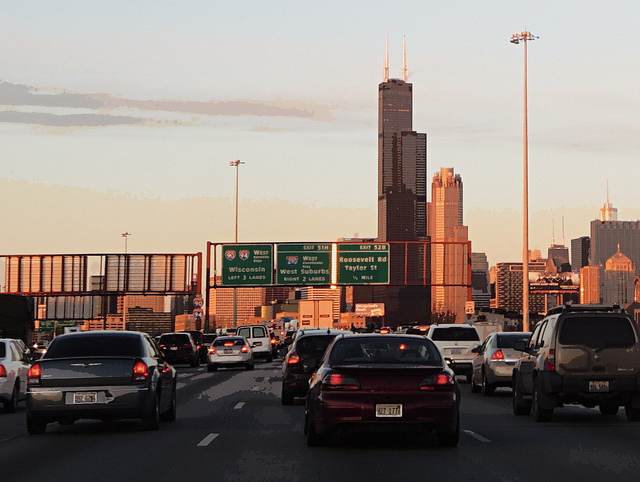Cook County Residents Love Driving To Work Alone
By Chuck Sudo in News on Jan 26, 2015 9:30PM
As Chicagoist’s two full-time caretakers, Lisa and I work from home a majority of the time. We roll out of bed and do our morning routines before we sit down, check in and lock and load the site every day. This has its advantages and drawbacks. One obvious advantage is we don’t have a commute so we aren’t bundling up for a walk through a hawkish wind to a train station six blocks away, catch a Blue Line downtown and have to wait out delays and the smells of hobo corner surprises to count down the hours until 5 p.m. to repeat the process.
Nor do we have to drive to an office, which is what 63 percent of Cook County residents do daily—and they do it alone. That’s according to estimates from the U.S. Census Bureau’s 2013 American Community Survey. America loves its cars and, despite calls to carpool and growing alternative transit options, driving solo to work is still de rigeur.
The survey shows 18 percent of Cook County residents use public transportation to get to work, and we can assume nearly all of that number is a result of Chicago’s access to CTA, Pace Suburban bus service and Metra. Surprisingly, 9 percent of Cook County residents carpool to work, followed by a tie for walking and working from home (4 percent) and bicycling or taxiing (1 percent). Looking deeper into the numbers, we wished the public transportation numbers would be higher, but that would entail tailoring the regional system so that it reaches a maximum amount of people.
The driving alone numbers increase as we look at the collar counties. Seventy-seven percent of Lake County residents drive to work alone; that’s the lowest number. In McHenry County that number grows to 82 percent; 81 percent of Kane County residents drive to work solo; 85 percent of Kendall County residents have empty seats in their car and 83 percent of Will County residents slog to work without someone to talk to.
Flowing Data has put together an interactive map of the Census survey that you can explore to see what areas of the country utilize public transportation the best.
